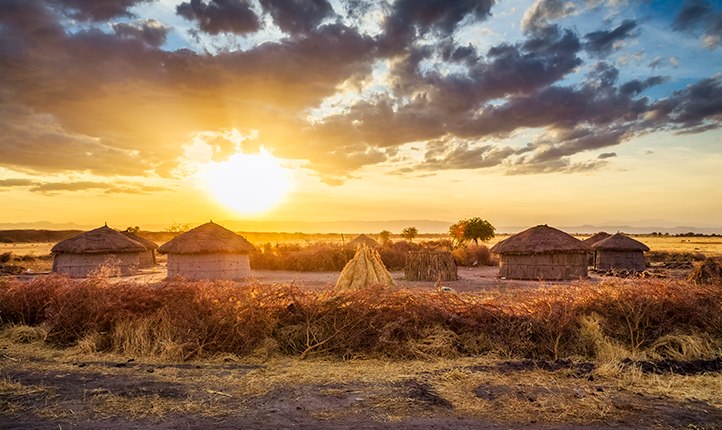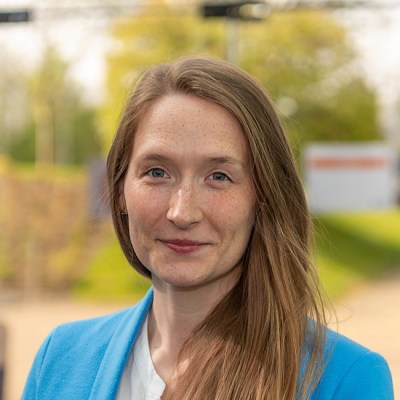Making a positive impact on the world through our commitment to the Tech for Good cause is a driving imperative here at CC. So, I’m delighted to report on an exciting innovation project with Vodafone that supports the vital ambitions of the UN’s Global Biodiversity Framework. We’re collaborating with the telecommunications multinational to develop technology that will help humans live in greater harmony with wildlife.
Vodafone, a valued client of CC’s parent Capgemini, is on a mission to show how technology can drive positive change. As the company puts it: ‘We hope to find more ways of using technology to help address conservation and sustainability challenges.’ That’s an admirable objective – and it’s backed by action.
As this video overview explains, Vodafone has instigated its ‘m-Twiga’ nature-positive initiative to confront the issue of conflict when humans and wildlife live in close proximity. Technology consultants, engineers and designers here at CC were brought on board to help with multiple aspects of the proposed solution.
Human-wildlife conflict is a global problem. Animals as well as humans are being killed, and crops are being destroyed. Around 75% of the world’s big cats are negatively affected, along with elephants in Africa, bears in Canada, tigers and crocodiles in India and wolves in Norway. Governments are paying billions of dollars in compensation for injuries, as well as for property and agricultural losses.
Nature-positive Tech for Good
Vodafone is creating a solution to mitigate this conflict. It aims to stop elephants from crop raiding and damaging key infrastructure and prevent carnivores from predating on livestock. The technology detects lions, wolves, hyenas and other wildlife at a distance. It will harness the Internet of Things (IoT) and work around the clock with a combination of solar power and rechargeable batteries.
Four cameras will search the entire circumference of a given area, which is illuminated with infra-red lights, to sense when an animal is approaching before it gets too close. Using a combination of deep learning and robust algorithmic decision making, animals are detected and identified, triggering an appropriate deterrent such as flashing lights or a specific noise.
Elephants, for example, are known to be deterred by the sound of a swarm of African bees. Meanwhile, IoT connectivity is used to send SMS alerts to the local community, and wider alerts and reports via a cloud server. These alerts contain information including the time, location and species identified, as well as what deterrent was activated. The AI runs on the edge and the entire system is housed in a robust and weatherproof enclosure.
“The UN’s Global Biodiversity Framework includes a target to minimise human wildlife conflict for coexistence. We believe this new technology can help achieve this and bring positive change to the communities and animals facing these tough challenges.”

Camera traps, of course, have been used by conservationists for many years. Output ranges from grainy images that need to be downloaded from an SD card to beautiful photos transmitted remotely. But bringing the AI to the edge, with simple actionable alerts sent by SMS, takes this system beyond research and empowers the local community to act for themselves and coexist with the wildlife around them.
So why do I think that we were the right people to help? Developing a first proof-of-concept for a solution like this that combines multiple technical subsystems requires system-level thinking – plus a readiness to tackle both the expected and unexpected challenges that crop up. With a technical team spanning both Vodafone and Cambridge Consultants, system-level thinking and close collaboration was essential in understanding the interactions between subsystems and spotting potential risks.
The concept is working well thanks to frequent and open communication, and a pragmatic approach to finding the balance of defined requirements and interfaces versus the need for flexibility. This was a journey of finding a ‘good enough’ solution (appropriate relative to the maturity of the programme), rather than developing the end product in one big lion’s leap.
As well as being mechanically designed for tough environmental conditions (high temperatures, direct sunlight, ingress of dust and insects), the system must work at distances upwards of 10 meters, in both bright daylight and nighttime, with fast-moving animals. It must produce images clear enough not just for a person to peer at and puzzle over but for an automatic algorithm to quickly make what could be a critical decision for a farmer’s livelihood. So, we knew at the outset that the design of the camera system would be a core challenge.
“It was great working with CC. They have so many disciplines under one roof that it was not only their deep knowledge in specific areas, but also their ability to adapt and respond to challenges as they arose that helped us create a great solution.”
What we didn’t know was that it would take a combined effort not just from our optical physicists but also our firmware engineers to come to a solution that balanced the requirements on night-time illumination level, daytime exposure and motion blur. This we achieved all with one camera and no moving parts.
In my view, Vodafone’s commitment should be applauded. Members of the telecommunications industry have a key role to play as thought leaders driving the awareness of biodiversity loss and other key challenges facing us in the 21st century. With its global reach and detailed local awareness, the industry can also make the latest information and intelligence platforms available everywhere.
“CC applies deep tech to deliver defensible, long-term value for our clients. And because we care about our impact on society, we are investing in breakthrough innovation projects that bring positive societal impact now.”
Innovating for nature and biodiversity
Increasingly, biodiversity and the integration of nature into decision making is demanding radical yet ethical innovation. The Taskforce on Nature-related Financial Disclosures (TNFD) has developed a set of disclosure recommendations and guidance for organisations to report and act on evolving nature-related dependencies, impacts, risks and opportunities. Change is accelerating.
As for CC, we are keen to partner with companies in these types of projects because we recognise the need for businesses understand and maximise the positive impact they can and do have. We want to play our part bringing benefit to society and the world – and this project is a shining example! Reach out to me if you have an initiative you’d like to discuss.




